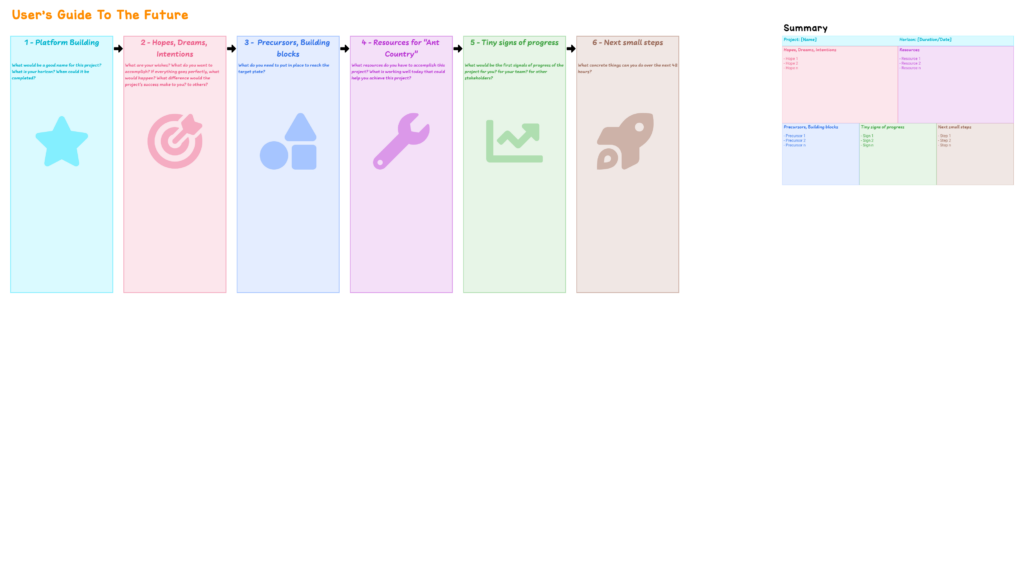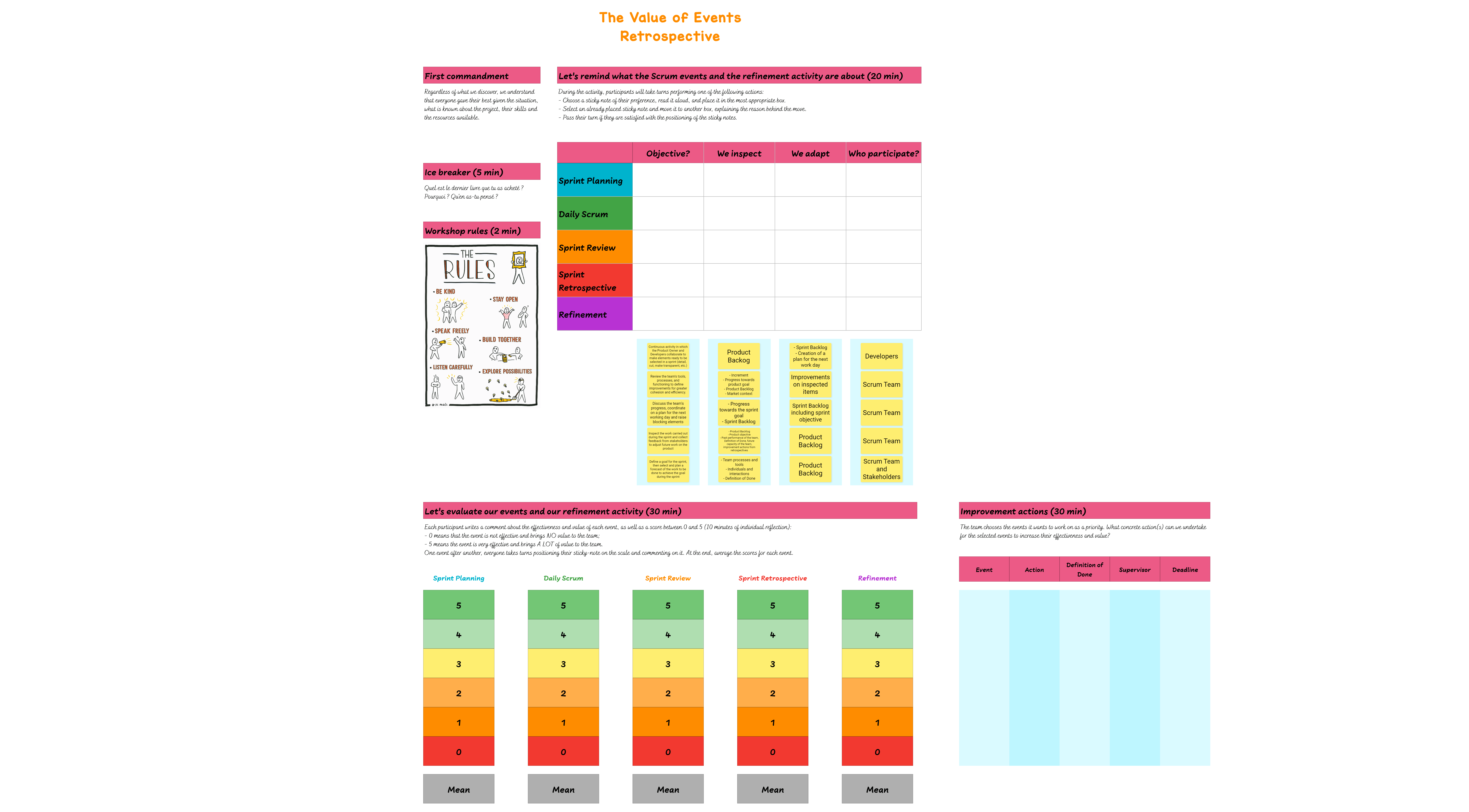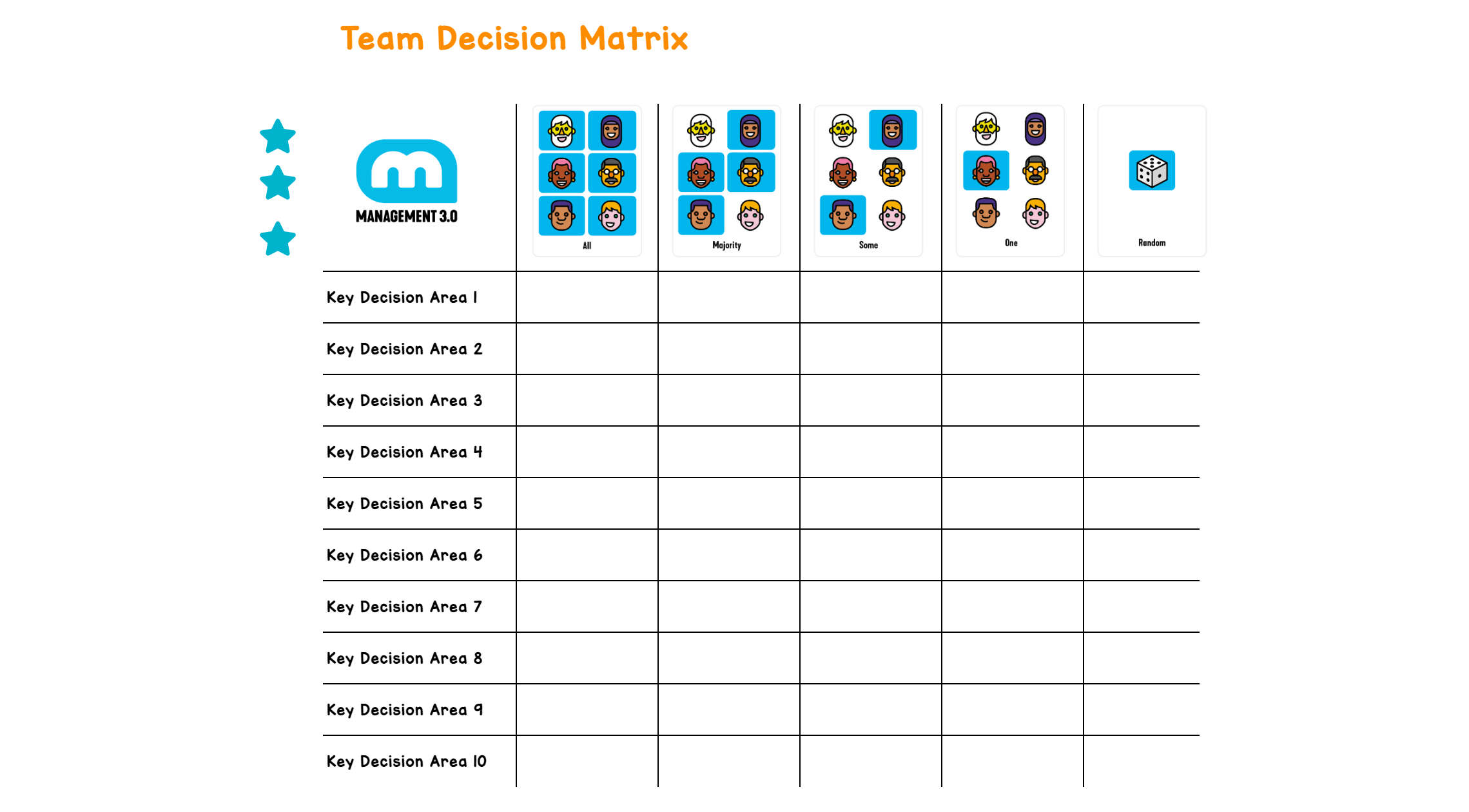Description of this workshop
The User's Guide To The Future workshop is based on the Solution Focus approach, which is a change management technique that highlights finding solutions instead of focusing on research and problem-solving. It draws inspiration from the work of Steve de Shazer and Insoo Kim Berg, psychotherapists and founders of the Brief Family Therapy Center, who developed a therapeutic approach that puts the emphasis on solutions instead of problems.
The main goal of this workshop is to establish a connection between a desired target state in the long run and the relevant actions you can accomplish in the short term. First, participants begin by envisioning themselves in the desired future and then utilize the resources available in the present. Finally, they should determine the initiatives that can be carried out in both the short and very short term.
This coaching tool was designed by Mark McKergow and Peter Röhrig, both management consultants. They detailed it in the following article: The “Users Guide to the Future” as a Coaching Tool.
The template is made up of 6 sections, to be processed in the following order:
- Project Name (Platform Building): What would be a good name for this project? What is your horizon? When could it be completed?
- Description of target state (Hopes, Dreams, Intentions): What are your wishes? What do you want to accomplish? If everything goes perfectly, what would happen? What difference would the project's success make to you? to others?
- Precursor elements to put in place (Precursors, Building blocks): What do you need to put in place to reach the target state?
- Inventory of existing resources (Resources for the ‘Ant Country’): What resources do you have to accomplish this project? What is working well today that could help you achieve this project?
- Small signs of progress for each precursor element (Tiny Signs of Progress): What would be the first signals of progress of the project for you? for your team? for other stakeholders?
- Initiatives to undertake tomorrow for each precursor element (Small Next Steps): What concrete things can you do over the next 48 hours?
How to run this workshop
The workshop takes place in 6 stages, in the form of a discussion between the participants. If the number of participants is too large, you can separate the group into several subgroups and pool the contributions in a second step.
The six steps are as follows:
Step 1: Platform Building
In the first step of your project, the main objective is to imagine a name that is inspiring and motivating for your team and stakeholders. The name should be catchy and should reflect the essence of the project.
Additionally, you need to define a time frame for the completion of the project. This time frame should not be seen as a deadline but rather as a target you want to achieve. Depending on the project, the time horizon can be distant or close, but it should be clearly defined so that everyone involved is on the same page.
Now that the project has a name and a defined time frame, it has become a tangible and achievable goal.
Step 2: Hopes, Dreams, Intentions
It is vital to set the direction to travel. Step 2 involves describing goals and impacts without excessive detail.
Step 3: Precursors, Building blocks
Defining the precursor elements or building blocks is the main objective of step 3. It plays a crucial role in achieving the previously set intents. This step is influential in steps 5 and 6. The elements enlisted in this step should be specific and tangible. They help the team to concentrate on ideas that can create a real impact.
Step 4: Resources for “Ant Country”
During step 4 of the project, it is important to take stock of all the resources at your disposal that can aid in tackling the project's challenges. The aim is to utilize any existing material or human resources that are currently working well, and repurpose them for future use.
Step 5: Tiny Signs of Progress
In the coaching model, Step 5 is crucial as it revolves around the idea of progress. It involves identifying the first signs of progress for each of the precursor elements listed. These signs could be easy-to-measure indicators and relate to processes or actions that were previously not evaluated. These signals could show progress with respect to the project team or other stakeholders involved.
Step 6: Next Small Steps
At the end of the workshop, participants are encouraged to come up with actionable steps that can be taken immediately and, if possible, without external approval. The aim is to establish a solid foundation and make quick progress in the project.







